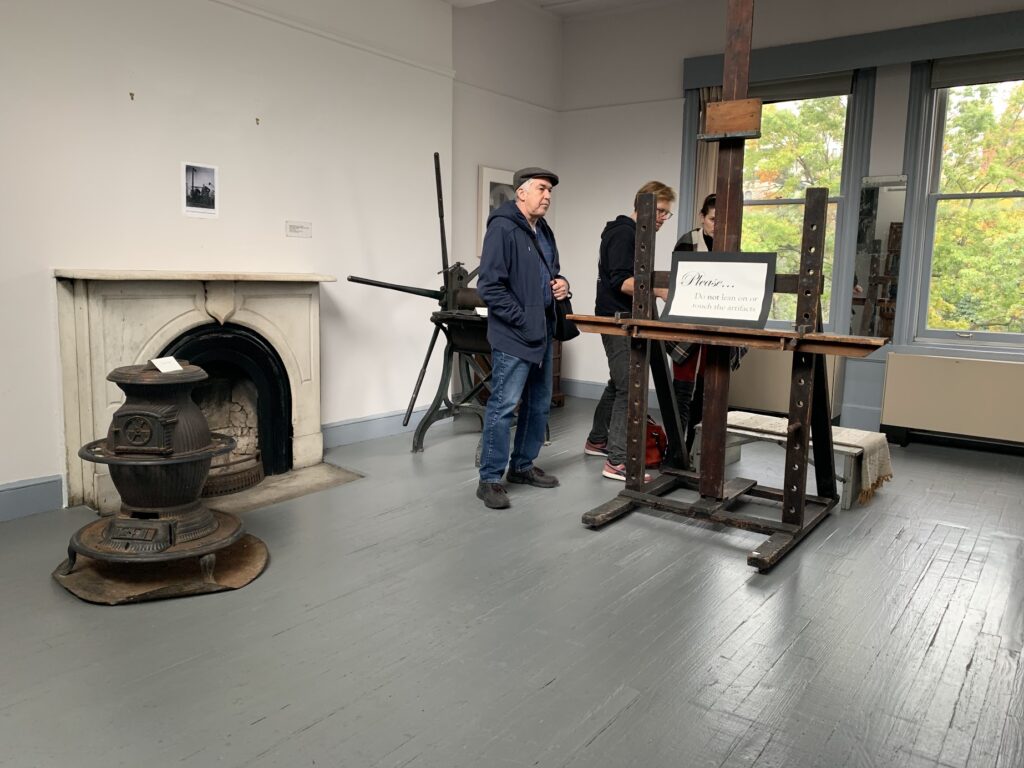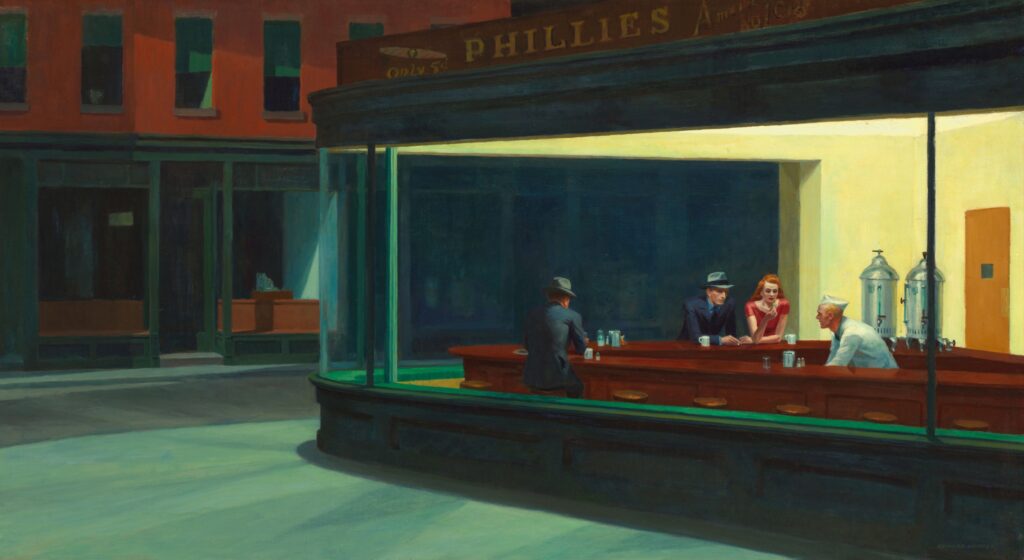Within the New York City of Edward Hopper‘s imagination, the skyscrapers have vanished, the sidewalks are mysteriously wide and all the diners and Chop Suey restaurants are sparsely populated with well-dressed lonely people.
In this art-filled episode of the Bowery Boys, Tom and Greg look at Hopper’s life, influence and specific fascination with the city, inspired by the recent show Edward Hopper’s New York at the Whitney Museum of American Art.

Hopper, a native of the Hudson River town of Nyack, painted New York City for over half a decade. In reality, the city experienced Prohibition and the Jazz Age, two world wars and the arrival of automobiles. But not in Hopper’s world.
In his most famous work Nighthawks (1942), figures from a dreamlike film appear trapped in an aquarium-shaped diner. But Hopper has captured something else in this iconic painting: fear and paranoia. No wonder he’s considered a huge influence on Hollywood film noir and detective stories.
Hopper painted New York from his studio overlooking Washington Square Park, and both he and his wife Josephine Nivison Hopper would become true fixtures of the Greenwich Village scene.
PLUS: Tom visits the Edward Hopper House Museum in Nyack, New York, to talk the artist’s early life with executive director Kathleen Motes Bennewitz. And Greg finds some of the hidden meanings in Hopper’s paintings thanks to American art historian Rena Tobey.
LISTEN NOW: NIGHTHAWKS AND AUTOMATS
Information on the Whitney Museum of American Art‘s show Edward Hopper’s New York can be found here.
And for some insight into his early years, visit the Edward Hopper House Museum in Nyack, New York. Info here.

And check out Rena Tobey’s website for upcoming news on her upcoming art talks. Her next art conversation:
Finding Her Way: Painting Urban Women’s Experiences 1840-1940
Tuesday, March 28, 2023, 2:00-3:00 p.m.
Online with the Manhattan JCC


From the Edward Hopper House Museum in Nyack, NY:




From inside Edward Hopper’s studio at 3 Washington Square North (from Open House NY 2019). Information on the studio here.



Although Hopper’s painting are mostly from the domain of his imagination, you can see some of his architectural subjects on the streets today. For more information, visit this interesting article posted at Village Preservation.






FURTHER LISTENING
After finishing this show on Edward Hopper, dive back into our back catalog and experience other shows related to Hopper and his subjects:
Art Insanity: The Armory Show of 1913
Jane Jacobs: Saving Greenwich Village

